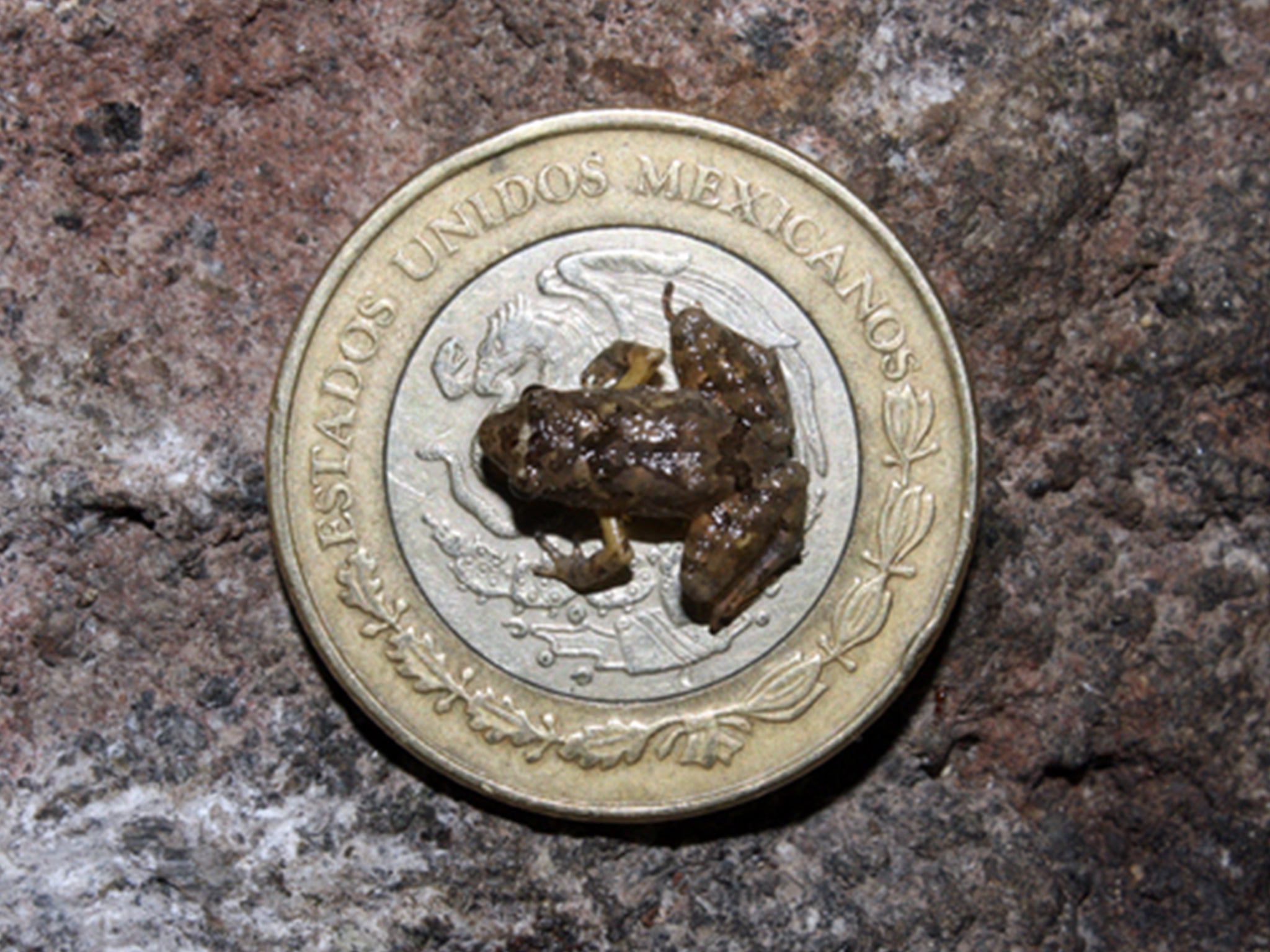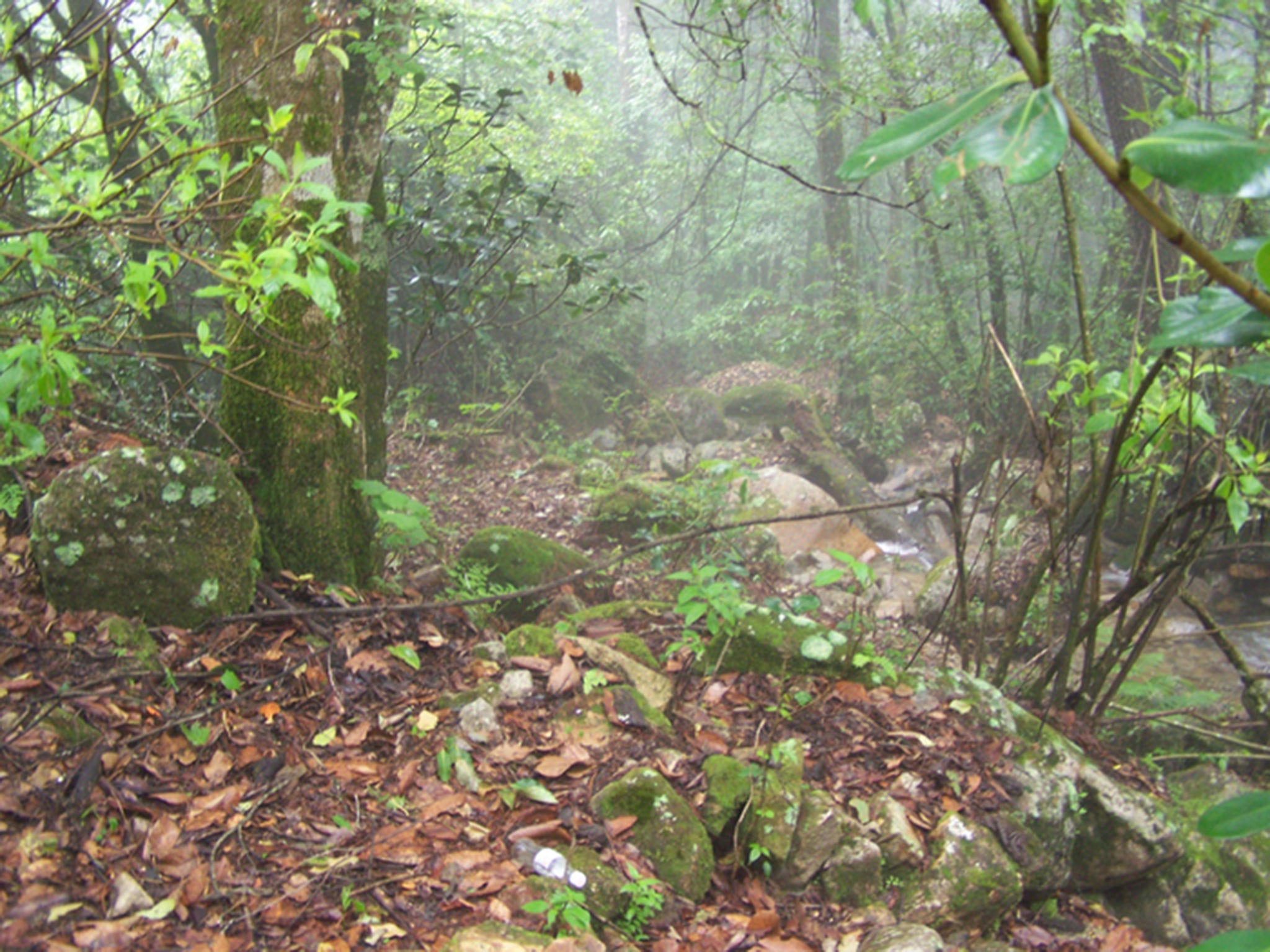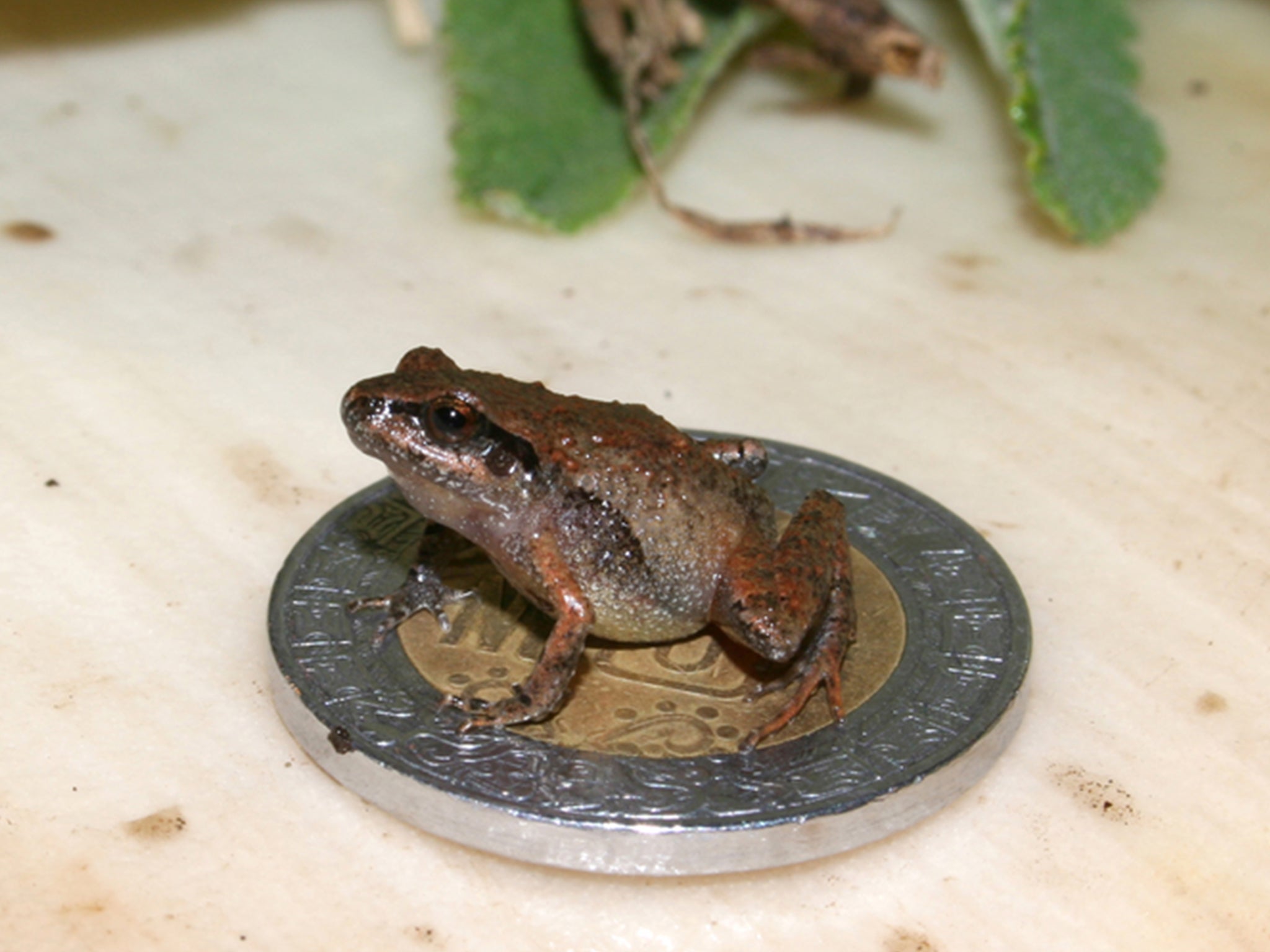‘Utterly fascinating’ species of frog smaller than a 1p coin discovered in Mexican forest
Some of new frogs can only be found on single hillsides in Mexico

Your support helps us to tell the story
From reproductive rights to climate change to Big Tech, The Independent is on the ground when the story is developing. Whether it's investigating the financials of Elon Musk's pro-Trump PAC or producing our latest documentary, 'The A Word', which shines a light on the American women fighting for reproductive rights, we know how important it is to parse out the facts from the messaging.
At such a critical moment in US history, we need reporters on the ground. Your donation allows us to keep sending journalists to speak to both sides of the story.
The Independent is trusted by Americans across the entire political spectrum. And unlike many other quality news outlets, we choose not to lock Americans out of our reporting and analysis with paywalls. We believe quality journalism should be available to everyone, paid for by those who can afford it.
Your support makes all the difference.Six new species of frog, all of them smaller than a British 1p coin, have been discovered in the forests of Mexico.
One of the species, Craugastor candelariensis, has earned the distinction of being Mexico’s smallest frog, with males only growing to be 13mm long when mature.
All six species are known as “direct-developing” frogs. This means they are of the rare breed which do not burst from their frogspawn as tadpoles but as fully-formed frogs.
Unfortunately for the miniature amphibians, their tiny size places them at the bottom of the food chain in the Valley of Mexico forests where they were found.
“With millions of these frogs living in the leaf litter, we think they’re likely to play a hugely important role in the ecosystem as a source of food for everything else, from lizards to predatory birds,” said Tom Jameson, a researcher at the University of Cambridge’s Department of Zoology and lead author of the paper on the frogs’ discovery.
A team of researchers from the University of Cambridge, the Natural History Museum and the University of Texas at Arlington stumbled across the new species when studying the relationship between around 500 frog specimens that had been collected in Mexico.

“Until now these new species have gone unnoticed because they’re small and brown and look really similar to other frogs,” said Mr Jameson.
Their habitat is one little understood by humans. Mr Jameson said: “These frogs live in the dark, humid leaf litter of the forests, which is like a secret world – we don’t really know anything about what goes on there. We don’t understand their behaviour, how they socialise, or how they breed.”
“Their lifestyle is utterly fascinating,” he added.
The six species all belong to the genus Craugastor, which consists of direct-developing frogs and spreads from the southern USA to northern South America.
Mr Jameson said frogs of the genus are difficult to tell apart, “so scientists have long suspected that more species may exist”.

The new species have been named Craugastor bitonium, Craugastor candelariensis, Craugastor cueyatl, Craugastor polaclavus, Craugastor portilloensis, and Craugastor rubinus.
Some of them are known as “micro-endemics” not because of their stature but the tiny range of their distribution. These frogs are only found in very small areas, such as a single hilltop in Mexico. This makes them highly vulnerable.
Mr Jameson explained: “We named Craugastor rubinus after the garnet mines in the hillside where they’re found.
“Sadly, it will only take the expansion of one mine and these frogs could be gone.”
Climate change also threatens their habitats. And they are susceptible to chytridiomycosis, a deadly fungal disease that is wiping out amphibian populations across the world.

But the researchers are hopeful the tiny frogs will survive. They have identified key protected areas throughout Mexico where the six new species live and now hope to work with the government and NGOs in Mexico to connect these areas together.
“These frogs potentially play a really important role in the forest ecosystem,” said Mr Jameson. “We need to make sure that they don’t just get wiped off the map because no-one even knows they’re there.”
He said there are likely many more Craugastor species still to be discovered, simply because nobody has yet looked for them.
Scientists are finding new species of frog all the time and the Americas are a prime location for discovery.
Last month scientists found two new species of see-through, or “glass”, frogs in Ecuador that were notable for appearing almost identical but having vast genetic differences.
The team behind the Craugastor discoveries have published their research in the journal Herpetological Monographs.



Join our commenting forum
Join thought-provoking conversations, follow other Independent readers and see their replies
Comments